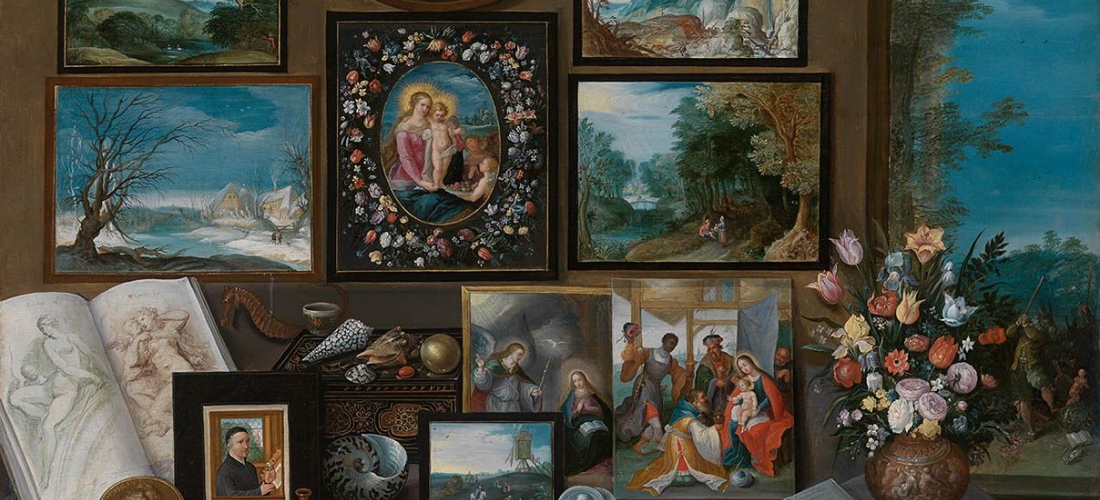De Rubenianum Fellow Jamie Richardson vertelde over het genre van de geschilderde kunstkamers.
Tijdens de eerste helft van de 17de eeuw schilderde Frans Francken de Jongere (1581-1642) afbeeldingen van verzamelingen en kunstkabinetten of ‘constcamers’. De lezing van Rubenianum Fellow Jamie Richardson (Bryn Mawr College) handelde over Franckens ontwikkeling van dit typisch Antwerpse genre en meer specifiek over een curieus sub-genre: het stilleven van verzamelingen.
Deze lezing werd in het Engels gegeven.
Met de steun van het Fonds Inbev-Baillet Latour.
Highly specialized and born of the specific artistic, intellectual, and economic conditions of Antwerp in the first half of the seventeenth century, the “gallery painting” genre of constcamer images is renowned for its depiction of sumptuous collections featuring exotic naturalia and luxurious artificialia – including miniature depictions of well known art works – typically examined by nobly dressed connoisseurs in elegantly appointed interiors. Purposefully seductive so as to advertise the skill their Flemish creators in the competitive European art market, these works’ enthralling attention to detail interlaced with allegorical symbolism appealed to the intellectual preoccupations of potential buyers, especially the liefhebbers der schilderyen who were officially recognized by Antwerp’s Guild of St. Luke in 1602. While previous studies have investigated the “gallery painting” genre as a progressive whole, little attention has been given to its earliest stages of development as manifested in the work of the genre’s likely inventor, Frans Francken the Younger (1581-1642). Notably, Francken’s oeuvre includes examples of all four of the genre’s subtypes: “portraits” of verifiable collections; imaginary collections; allegorical/satirical collections; and the so-called “encyclopedic still life” or Preziosenwand, which, unlike other images of the genre, depicts liefhebber-type figures marginally or not at all and instead situates the viewer in the privileged position of collector. This lecture addressed the last and least studied of these categories, painted exclusively by Francken and his studio, in the context of early modern curiosity culture and its discursive practice of collection.


